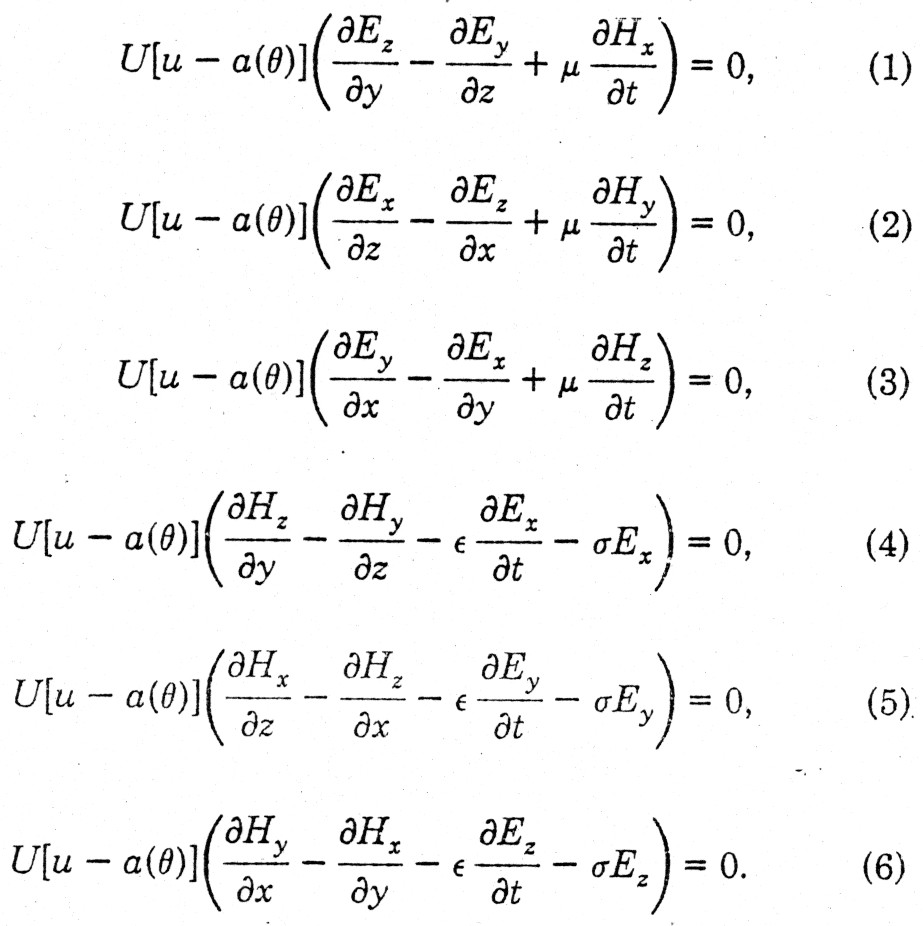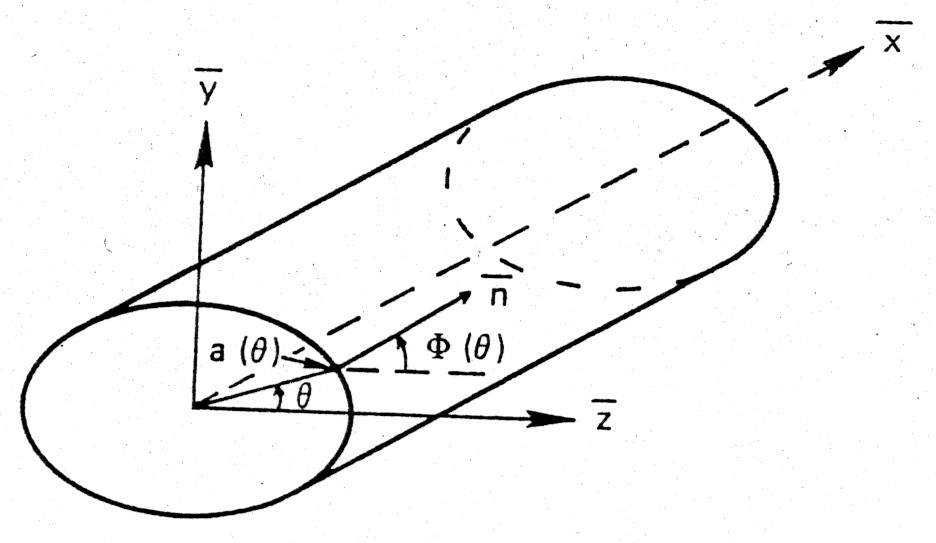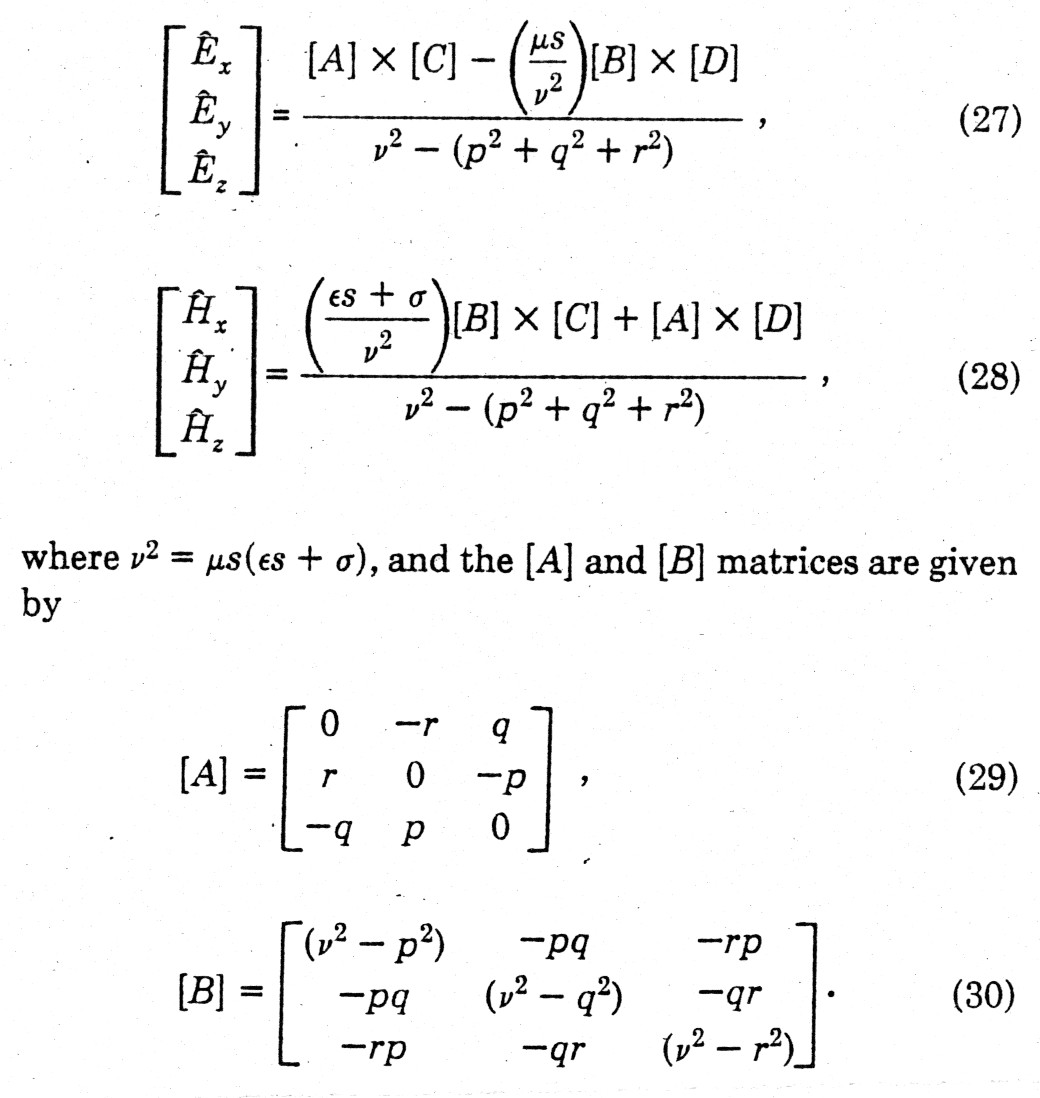EDWARD HYMAN, Ph.D.
Maxwell’s Equations[1] regarding electromagnetic theory is regarded as something that cannot be reduced to anything simpler. These equations are capable of exhibiting, in their main features, all phenomena connected with the propagation of electromagnetic waves. All laws of reflection and refraction of electromagnetic waves due to media discontinuities are derivable from Maxwell’s Equations.
My previous work on Maxwell’s Equations dealt with
I Analyzing the consequences of electromagnetic wave propagation through an irregular shaped aperture [2]
Ii Determining the electromagnetic responses of cylinders of arbitrary cross sections [3].
Task ii above allows the definition of an arbitrary media discontinuity through the use of that entity known as the Unit Step Function. It is a technique to determine all consequences of on an incident electromagnetic field upon a media discontinuity . The media discontinuity is defined as an arbitrary surface function specified within the argument of the Unit Step Function. My analysis begins with the well known Maxwell’s Equations multiplied by the Unit Step function (figure 1), the argument within the Step Function specifying a cylinder of arbitrary cross section (figure 2).

figure 1

figure 2
The analysis in tasks I and ii above takes the form of a four fold (the three dimensions of space and the one dimension of time) Laplace Transform applied to the equations of figure 1.
Results indicate an algebraic solution for all electric and magnetic effects as a consequence of certain specified boundary conditions (figure 3). These boundary conditions are the electric and magnetic fields specified on the cylindrical boundary.

figure 3
Solutions for each of the electric and magnetic field components are determined in Euclidean Space by invoking multi dimensional inverse Laplace Transforms, as specified in references [2] and [3] below.
The application of the above concepts to the Pyramid at Giza come about by analyzing the electromagnetic response of an incident electromagnetic field upon the Northern and Southern Ventilator Shafts (wave guides), as well as upon the coffer within the King’s Chamber, and upon the King’s Chamber itself. It is expected that the King’s Chamber resonates the incident electromagnetic field (the 2, SQRT(5),3 and the 3,4,5 Pythagorean triangles inherent in its construction).
The other phenomenon of interest in studying the Pyramid at Giza is the determination of the various acoustic coupling effects, for instance, the consequence of an appropriate acoustic wave incident upon the five layers of sculptured granite rock residing on top of the King’s Chamber, the effect of the Giza pyramid’s harmonics upon a Helmholtz resonator resident within the Grand Gallery, and, finally, the effect of the earth’s harmonics upon the Giza pyramid itself.
It is known that acoustic phenomena are governed by that entity known as Newton’s Equations (figure 4). That Is, Newton’s Equations are considered as basic to the study

figure 4
of acoustic wave propagation as are Maxwell’s Equations to the study of electromagnetism. Newton’s Equations, like Maxwell’s Equations, are linear differential equations, hence the techniques of Laplace Transform analysis as applied to Maxwell’s Equations in references [2] and [3] below are appropriate for application to Newton’s equations as well. Indeed, using the identical Unit Step Function multiplier having as an argument a surface function (as in figure 1 for Maxwell‘s Equations) , Laplace Transform Analysis applied to Newton‘s Equations of figure 4 yield the following algebraic solution for the acoustic response of an object (figure 5).

figure 5
The boundary matrix, C, in figure 5. is the acoustic wave on the boundary of the surface. And, multiple inverse Laplace Transforms applied to the algebraic equations of figure 5 yield established results in Euclidean space for acoustic coupling effects on known objects.
One may generalize the surface function in the argument of the Unit Step Function to depict arbitrary 3 - D surfaces. For instance, one may determine the coupling effects between a sphere and a hard pyramid (figure 6 ) [4].

figure 6
As earth itself may be considered an elastic medium through which waves propagate (earthquake waves, for instance), the appropriate specifications of the parameters for density of earth at rest and for pressure of earth material, as in Newton’s Equations above for air, may allow the analytic derivation of the coupling effects between the earth and the Giza Pyramid, suitable for numerical computation.